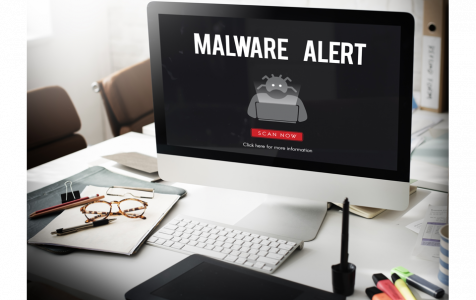CCXProcess.exe is a process that operates in the background of a Windows system and it is visible from the Task Manager. Cscript.exe and conhost.exe are part of its various instances.
The process connects to Adobe Creative Cloud (ACC), which offers an extensive video editing, website development, as well as photography ecosystem. Since this is an Adobe-related process, it can be associated with Lightroom, After Effects, and other apps of the family.
While it seems a legit process, it is also a bit controversial as it has caused computer performance issues. Some users reported that the process is problematic due to high CPU consumption and memory use. This issue can be a sign of either incompatibility between Adobe software and the third-party security software, or a virus infection such as the cryptojacker.
How CCXProcess.exe Works?
If you are affected by the problematic CCXProcess.exe problem, know that the effects can be severe. Most affected users stated that it can launch up to 200 instances at once. Such a figure is intolerable as it shows that there is something abnormal taking place. Also, the process can lock other apps from accessing the internet. Most apps, including the default browser, will further experience crashes.
Expert Tip: For smoother PC performance, consider using a PC optimization tool. It handles junk files, incorrect settings, and harmful apps. Make sure it's right for your system, and always check the EULA and Privacy Policy.
Special offer. About Outbyte, uninstall instructions, EULA, Privacy Policy.
Such a problem can make anyone believe that CCXProcess.exe is a virus. But, according to an Adobe technician, there seems to be a bug activated by an interaction between AVG and Adobe apps. With that said, the easy solution is to choose between the two. This leaves most users with no choice but to remove AVG security software.
We don’t direct using an unprotected machine as it jeopardizes your privacy and security. Thus, we recommend finding a trusted and reputable security suite to stay protected. If that doesn’t solve the issue, proceed with this guide for more solutions.
Note that any file executable can be named anything. This makes it easier for cybercriminals to disguise their malware content as legitimate. Users won’t be suspicious when they see a familiar process. So, to stay under the radar, malware entities pose as a legitimate process. Most of these fake processes that run in the background and consume high CPU/GPU/RAM are usually linked to crypto-mining malicious software.
Such malware consumes a lot of system resources in an attempt to solve algorithms and gain cryptocurrency. The harvested cryptocurrency is then transferred to the perpetrator’s crypto-wallets.
If that is the case, applying CCXProcess.exe virus removal methods is essential. Take preventive measures to avoid facing heavy financial losses, personal data theft, as well as delivery of extra payloads.
Usually, affected users may end up experiencing spam, ransomware attacks, keystroke monitoring, or identity theft. With everything considered, there are several approaches to fixing the issue which include:
- Uninstall the entire AVG suite and use an alternative.
- Use the Windows Registry Editor to fix the problem.
- Scan for malware using a powerful anti-malware security program.
Whatever the case is, you must take immediate action. High usage of CPU may damage other hardware components.
The first step to take towards combating malware is to be on guard while surfing the internet. Stop visiting insecure sites, downloading unverified installation files, opening unknown emails, and installing bundled software. These activities make up the tip of the iceberg to online bad behavior.
Should CCXProcess.exe Be Removed?
If you’re experiencing performance issues, then you should consider removing CCXProcess.exe. Also, if the removal of AVG doesn’t help, chances are that the file you’re dealing with is malicious or corrupted. Apply the following fix to solve the CCXProcess.exe issue:
- Into the Taskbar search field, type regedit and hit the Enter key.
- Now, navigate to HKEY_LOCAL_MACHINE\SOFTWARE\Policies\Adobe address.
- Hover to the right-pane and right-click anywhere. Select new from the context menu followed by Key. And then, name it CCXWelcome.
- Next, put a value entry titled Disabled under the key by typing DWORD(32-bit) and set the value to 0.
- Restart the computer.
If you suspect that your computer had a malware infection, it’s best to run a full system scan. Use a trusted anti-malware program. This will detect and quarantine malware in your system. Once done, it is advisable to launch the SFC scan utility. The tool is vital to detecting and fixing system file errors. When the virus attacks a computer, it goes beyond the surface to damage or corrupt system files. Hence, even if removed, the damage remains, leading to system performance issues.
- Open the Run dialog by pressing the Windows + R keys.
- Now, type cmd into the text field and press the Ctrl + Shift + Enter keys to launch an elevated Command Prompt. If prompted by the UAC, click on the Yes option.
- Into the command line, insert the command below. Then press the Enter key:
sfc /scannow - Wait for the process to finish. This may take about 15 minutes to complete depending on your system specs.
- Reboot the computer.
Now that you have fixed the possible damage done by the virus, move to the next step. Work on bringing your machine back to its best performance level. To achieve this, download and install a robust PC repair tool. One that will help identify as well as resolve performance issues. This type of tool is comprehensive. It addresses many system problems, cleans the drive, and optimizes performance and more.
Conclusion
In a nutshell, you mustn’t wait for things to go south to take necessary preventive measures. Always keep checking your security software if it’s enabled. Run periodical full system scans and apply safety precautions while browsing the internet. Avoid untrustworthy sites and only download from official sites. Keep your system safe and never let you guard down.
